In the latest version of Kasten, 3.0.1, we can find a series of improvements and an extremely important solution, the centralized administration of Multiple Clusters of Kubernetes For complete data protection, in this post we will see the features and functionalities of k10multicluster.
Introduction
As we saw in a previous post, it is necessary to update to the latest version of Kasten k10, you can find it:
https://www.24xsiempre.com/actualizar-kasten-k10/
After completing the update, we can go to the configuration of k10 Multi-Cluster, where, as always, we must review the official documentation that we can find at:
https://docs.kasten.io/latest/multicluster/index.html
In this post we will focus on the benefits of the new solution, soon I will write the installation guide that is very simple. Therefore, one of the requirements k10multicluster is the use of Kubernetes contexts, where in my case I have:
kubectl config get-contexts

Where you can keep as many clusters as you need for administration, of course there must be communication between all the clusters.
After that you can download the executable k10multicluster from
https://github.com/kastenhq/external-tools/releases
Kasten k10 Multi-Cluster uses the allocation of Primary and Secondary clusters (Secondaries), where there will always be only 1 primary and the others that are added will be secondary, therefore, you must select which will be your primary cluster and then add the secondary ones easily. In my case I will use the context kubernetes-admin@kubernetes as primary.
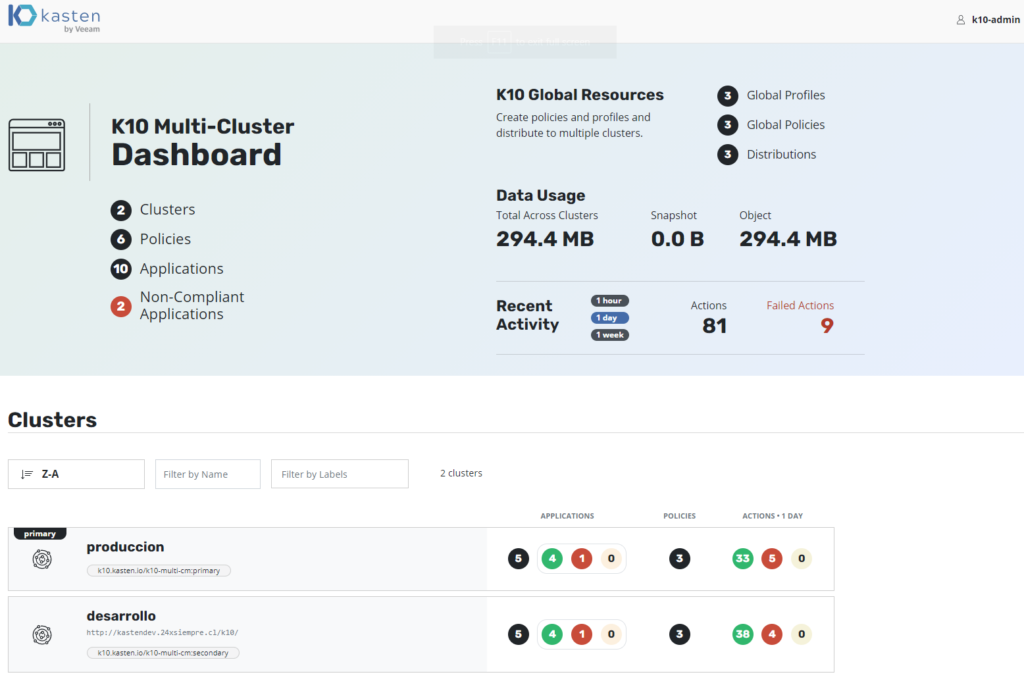
In the previous image we see the Multi-Cluster Dashboard with the cluster configuration "Production" and "Development", this is where we will review the optionsones most important that this great solution offers.
Global Resources
One of the great advantages is that it allows us to create resources for all clusters or assign only some resources to certain clusters, for example, as we have seen in previous posts, Kasten k10 always needs “Location Profiles” or profiles where we will store the data in object storage that you can use:
- Google Cloud Storage
- Amazon S3
- AzureStorage
- S3 Supported
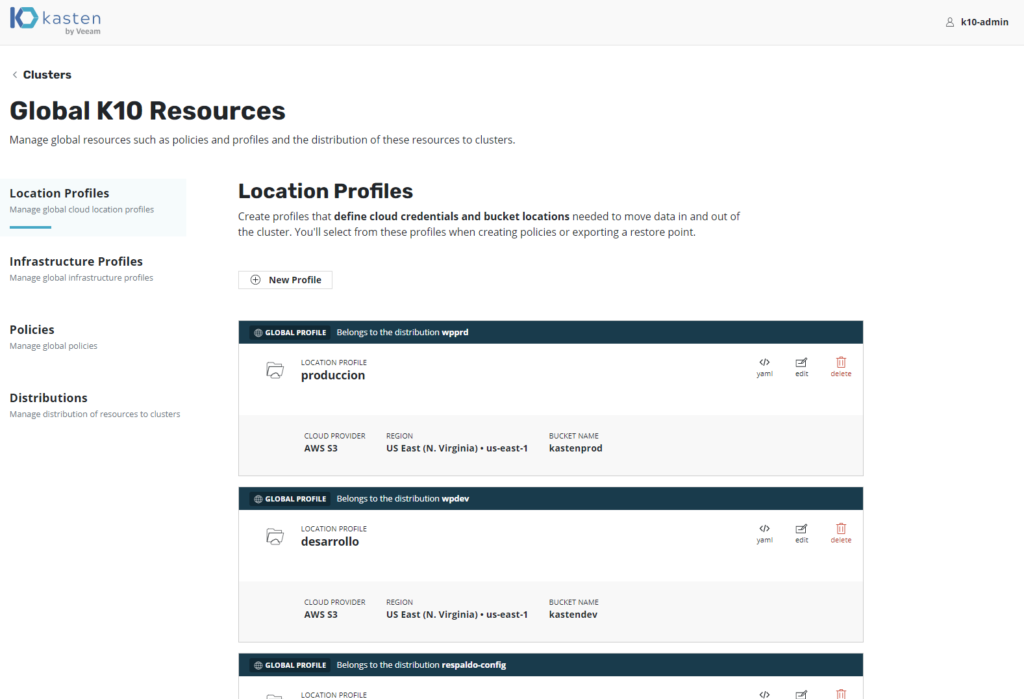
This way you will be able to keep the resources needed by your different Clusters of Kubernetes. as well Kasten k10 requires the "Policies" or Backup Policies which you can assign globally, even so each installation of Kasten k10 you can have your own policies if needed
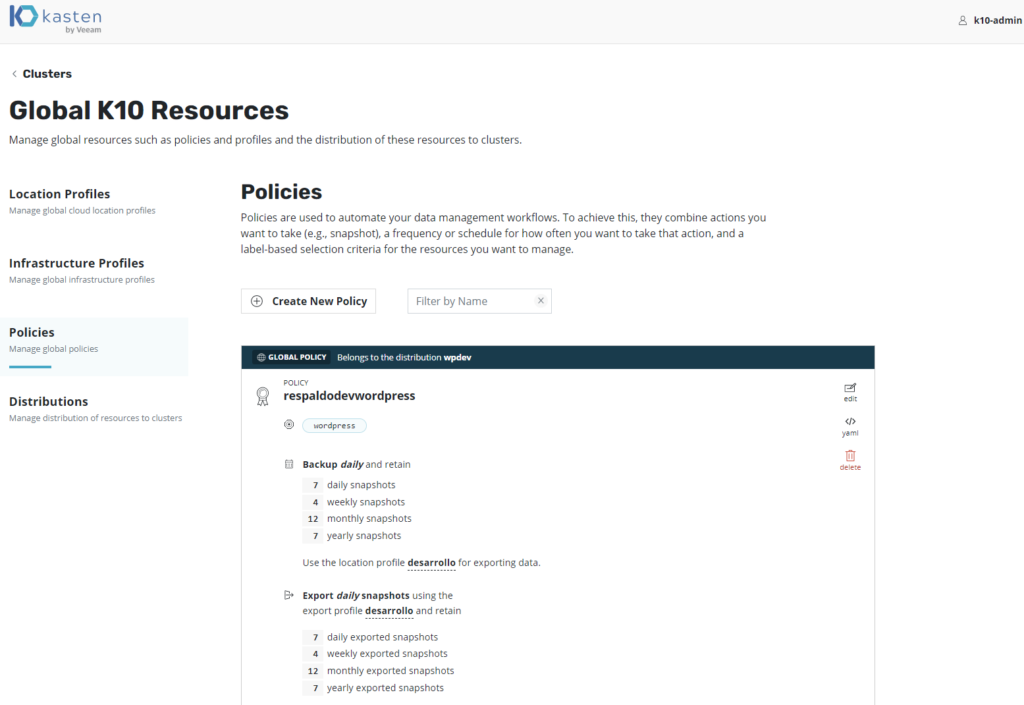
And finally the assignment of "Distributions" or distribution of global resources that can be assigned to each of the clusters or share the same resources:
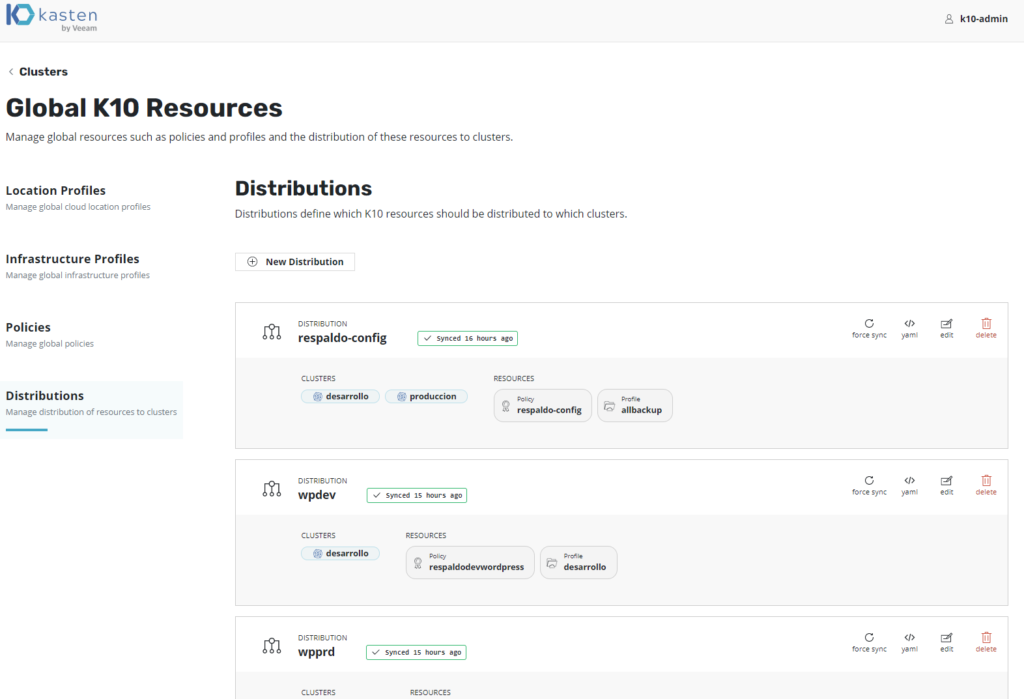
And this is where the important thing happens, because what we saw earlier about “Location Profiles” and “Policies” we have already used in the installations.ones normal of Kasten k10, but in this case, “Distributions” appears to assign and synchronize the resources and policies to the clusters of Kubernetes that we need to perform data protection, for example:
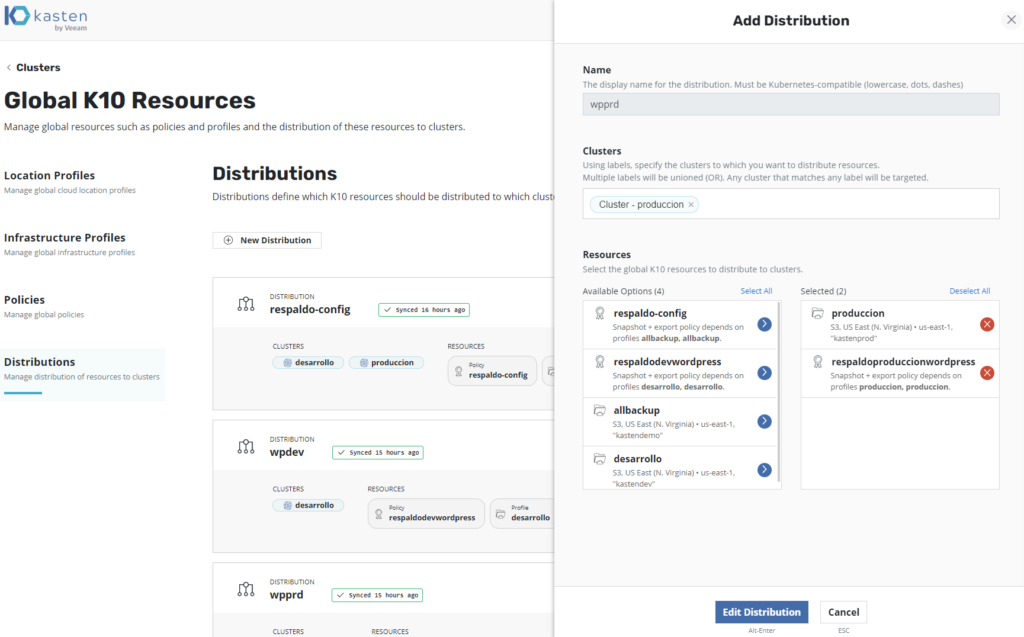
The “wpprd” distribution, which is to protect a wordpress instance and its respective MySQL, has an S3 bucket assigned to it called kastenprod with the respective support policy and execution scheduling for the productive cluster. Even if we enter the instance of Kasten k10 of production we can see:
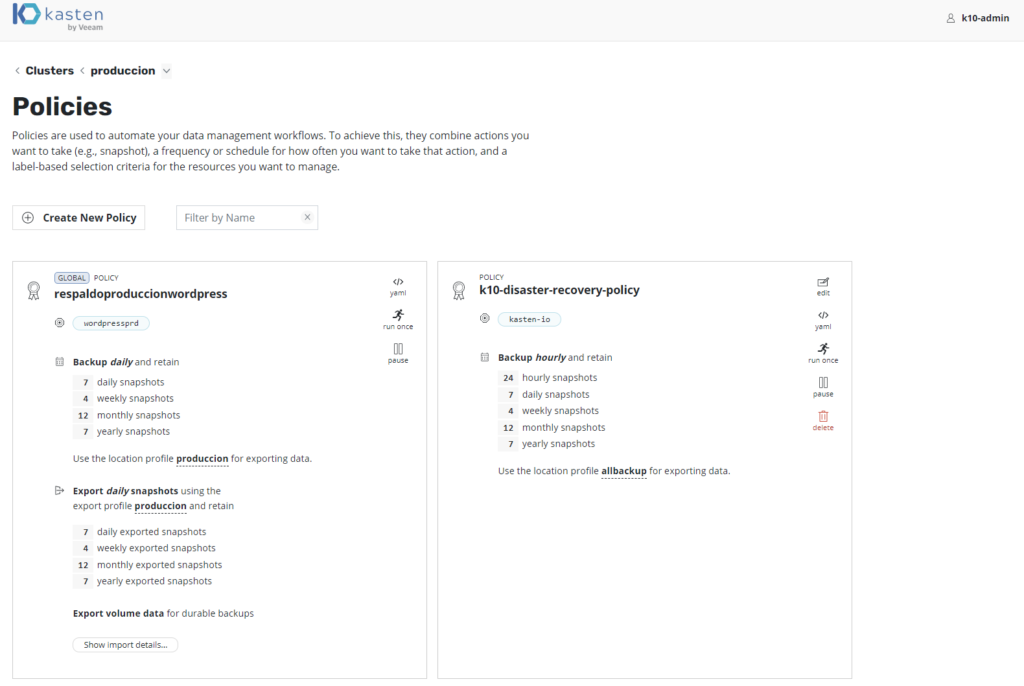
Which cannot be edited directly from the productive instance, it can only be edited from global resources.
In a future post, I will explain how to install and configure this tool step by step!
